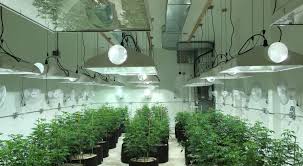In the field of commercial gardening, maintaining the best environmental conditions is vital to production and health of the plants. A well-designed HVAC (Heating, Ventilation, and Air Conditioning) system is crucial to manage the climate inside a grow room, ensuring that the plants get the right temperature, humidity, and airflow needed for growth. Here’s a complete guide to an commercial grow room hvac design.
Understanding the Basics
Temperature Control: Plants are able to regulate specific temperatures that encourage healthy growth. An HVAC system must maintain consistent temperatures, typically between 65-80degF (18-27degC) dependent on the species of plant. This includes cooling and heating capabilities. In the colder regions, a strong heating system is required, while in warmer regions, efficient cooling mechanisms are necessary to avoid overheating.
Humidity Management: Humidity control is equally critical. A high humidity level can cause mildew and mold, whereas low humidity can cause plant stress. HVAC systems need to contain dehumidifiers as well as humidifiers in order to keep relative humidity levels within a certain range, which is usually 40-60 40% to 60%.
Air Circulation: Properly circulated air ensures that the plants get an ongoing flow of air, and that old air is eliminated. This is achieved by ventilation systems that comprise air intake or exhaust systems. Air circulation is also a key factor in maintaining an even temperature and humidity throughout the room.
Design Considerations
Sizing the System: Correctly the HVAC system’s size is vital to ensure efficiency and effectiveness. An undersized system may struggle to maintain the proper conditions, whereas an oversized system could cause efficiency issues and increase operating expenses. HVAC units are typically measured based on the size of the grow room and the particular heat load produced by equipment, lights, and plants.
Energy Efficiency: Energy costs can be substantial in commercial expansion. By investing in energy-efficient HVAC equipment and components can reduce operational costs. Find systems that have high SEER (Seasonal Energy Efficiency Ratio) ratings. You may also consider adding programmable thermostats and energy recovery ventilators to optimize efficiency.
Integration with Other Systems: HVAC systems should be connected to other environmental control systems like CO2 enrichment and grow lights, to create a cohesive strategy for managing climate. Automation systems can assist in synchronizing HVAC operations with lighting cycles as well as other environmental factors.
Maintenance and Monitoring: Regular maintenance is essential to maintain the durability and performance in HVAC units. Installing a monitoring system will allow to monitor in real-time temperature, humidity, and airflow, which allows for quick adjustments, and stopping issues prior to they impact the health of plants.
Conclusion
Designing an effective cannabis hvac grow room requires a balance of humidity control, temperature control management, and effective circulation of air. By carefully considering system sizing as well as energy efficiency and integration with other environmental controls, growers are able to make a space that improves the health of plants and increases yield. Regularly scheduled maintenance and monitoring ensure that the HVAC system functions efficiently, creating the most stable and productive growth environment.



